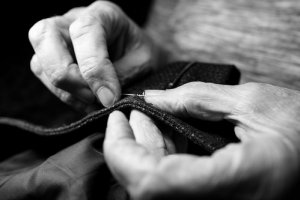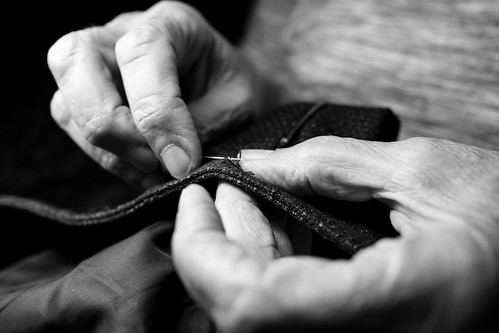
By: brando
What is CMC Arthritis/ Basal Joint Arthritis?
Carpometacarpal (CMC) arthritis/ basal joint arthritis is the most common form of osteoarthritis of the hand. Osteoarthritis is a degenerative joint disease that affects the base of your thumb, causing functional disability and pain, particularly with “pinching” actions.
As a health professional (COTA/L) working in an outpatient orthopedic hand therapy practice, I would say this is one of the most common conditions seen.
Below is a video describing CMC arthritis/ basal joint arthritis.
Who gets it?
CMC arthritis/ basal joint arthritis can affect both men and women, but according to Dias et al. (2006), this condition is seen predominately in postmenopausal women >50 years of age, with a female to male ratio of 6:1. This correlation between osteoarthritis and menopause is a cause of concern for women undergoing postmenopausal hormonal changes.
The International Menopause Society has identified the significant impact of osteoarthritis on women. Data collected from a multidisciplinary hand clinic in London found that 80% of the patients were predominately women who had either developed their symptoms within four years of entering menopause or opted to discontinue their menopause hormone therapy (MHT) (Fenton & Panay, 2010).
By: Núria Gascón
What are the causes?
CMC arthritis/ basal joint arthritis can occur as a result of normal wear and tear of the joint cartilage due to natural signs of aging. Other causes can arise due to trauma or injury to the thumb joint. Hormonal changes may also result in laxity (loose) and unstable ligaments. According to Anakwe & Middleton (2011), it is unclear why this site is mostly affected but appears to be related to the large forces created at the thumb joint with pinching and grasping activities.
What are the signs and symptoms?
- Localized pain and swelling at the base of the thumb, aggravated by repetitive forceful pinching.
- Tenderness to the touch.
- Daily activities requiring grip and pinch, such as opening jars, bottle tops, turning doorknobs, and writing can become limited due to pain, weakness, and joint instability.
- Symptoms can occur in both thumbs.
This video below describes the joint structure in a little more detail.
How is it diagnosed and treated?
Most patients who are experiencing localized pain at the base of their thumb will seek out care from their medical providers, which includes primary care doctors, rheumatologists, or orthopedic hand surgeons. The medical providers will begin by making a diagnosis based on history, clinical assessment, and plain radiographs (X-rays). Radiographs help to stage the progression of the disease.
*Note: Other possible causes of pain at the base of the thumb include carpal tunnel syndrome, scaphoid arthritis, and de Quervain’s tenosynovitis.
Once your medical provider has confirmed a diagnosis, the next step is treatment, typically that would involve conservative (non-operative) treatment.
The process consists of:
A referral to a hand therapist or occupational therapist (these therapists specialize in hand disorders). The therapists will perform an initial evaluation to establish a care plan that consists of client-centered goals and treatment approaches specific to your care.
Conservative (non-operative) approaches consist of:
- Activity modifications: (these are simple modifications by the patient that can effectively reduce pain such as the use of less forceful pinching, alternate hand use and switching to a larger diameter writing instrument)
- Splinting: (to rest and immobilize the base of the thumb to help with pain relief and daily functional hand use)
*Note: There are different types of splints commonly used in the treatment of CMC arthritis/ basal joint arthritis. These include:
• Custom fabricated splints: These splints are molded for each patient by the hand or occupational therapist using thermoplastic material that has been heated in a splint pan.
• Prefabricated splints: These splints can be purchased from a pharmacy, medical supply company, or online. Sometimes your medical provider will issue you the splint.
- Non-steroidal anti-inflammatory drugs: (for pain and symptom management)
- Exercise: (to improve thenar muscle strength and thumb stability, and range of motion of the joint)
- Patient education: (to learn ways to manage your symptoms)
Indications for surgery:
When conservative (non-operative) treatments fail, and the pain becomes persistent and functionally disabling, that is an indication to seek a prompt referral to a hand surgeon.
The goals of surgery are to decrease pain, improve functional use of the affected hand, and defer the degenerative disease progression. There are different surgical procedures performed for this type of arthritis. One of the most preferred procedures by hand surgeons is called Thumb CMC arthroplasty, which involves removing the small wrist bone that is part of the CMC joint and replacing it with a wrist flexor tendon.
The video below provides more detail regarding conservative and operative treatment.
Benefits of treatment:
There are many benefits to having conservative (non-operative) treatment such as reducing pain, improving function, although these treatment approaches are not curative, they can help to delay surgery in most patients. For many patients, the idea of not having to undergo surgery makes conservative treatment all worthwhile.
One designed prospective study reported on 33 patients treated with hand therapy, splinting, and anti-inflammatory medication while awaiting surgery. The symptoms were greatly improved in 70% of the patients causing them to refuse surgery after seven months of treatment (Anakwe & Middleton).
So, going back to the question of whether conservative treatments help manage thumb pain. I would have to say yes. I have seen first-hand the benefits of conservative treatment with my patients in the outpatient orthopedic hand therapy practice. Surgery is not the only option and should be used solely as a last resort, as stated above, but it is always important to discuss appropriate treatment options with your medical provider.
References
Anakwe, R. E. & Middletown, S. D. (2011). Osteoarthritis at the base of the thumb. British Medical Journal, 343, 1160-1166.
Dias, R., Chandrasenan, J., Rajaratnam, V. & Burke, F. D. (2007). Basal thumb arthritis.Postgraduate Medical Journal, 83, 40-43.
Fenton, A. & Panay, N. (2016). Estrogen, menopause and joints. Climacteric, 19(2), 107-108.


